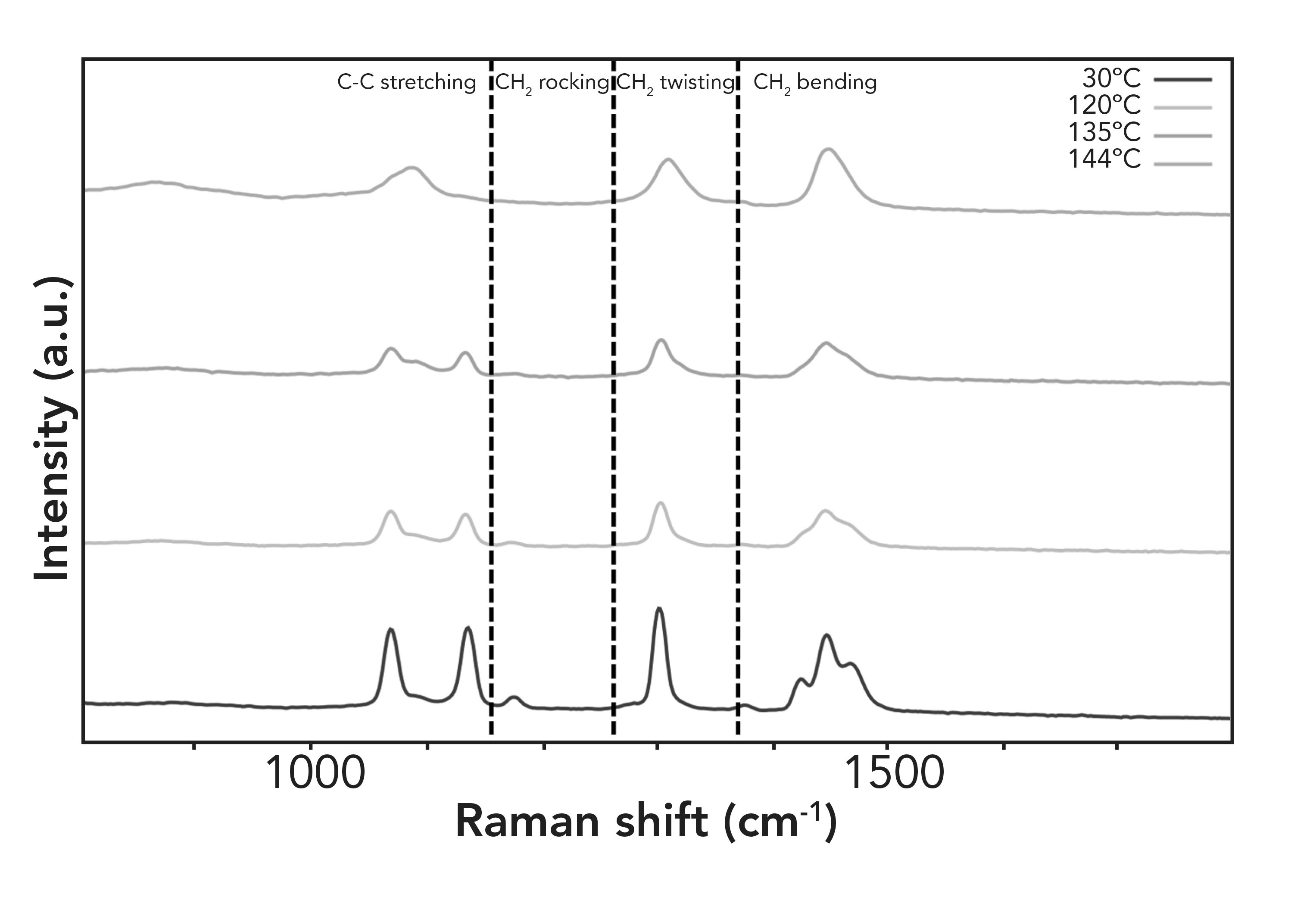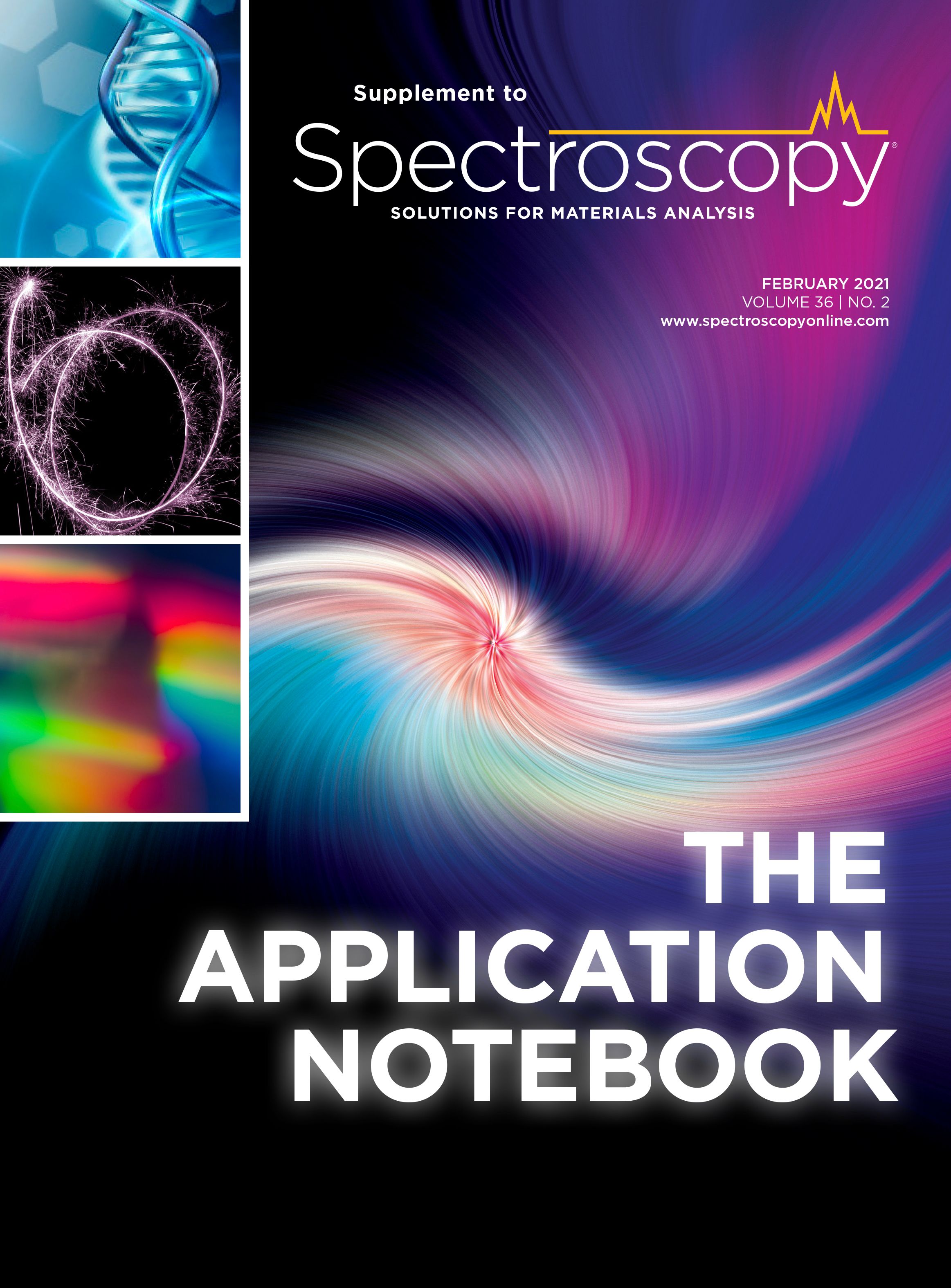Raman Spectroscopy as a Tool for Studying Polymer Phase Transitions

Semicrystalline polymers, such as polyethylene, are the largest group of commercially produced plastics. Heating and cooling between phase transitions is used in industry for shaping these polymers into their final product. A phase transition occurs when a substance changes into a different state, such as from a solid to a liquid.
Raman spectroscopy can be used to determine the glass transition temperature, melting transition temperature, and estimation of crystallinity. Peak intensities prove useful in identifying changes in the sample’s molecular organization, and therefore the temperature of transition such as the glass transition.
Experimental
Polyethylene and nylon-6 powders were analyzed using an Edinburgh Instruments RMS1000 Raman Microscope equipped with a 785 nm laser and a temperature stage. Raman spectra were acquired for each polymer at increasing temperatures as the sample reached a transition state.
Results
Figure 1 shows the Raman spectra for polyethylene at four different temperatures. The crystalline phase, shown here at 30 °C, has characteristic narrow Raman bands. This is due to the strict organization of the polymer in this state with trans-rich conformation. As the polymer is heated, it moves into the amorphous state and the polymer becomes more disorganized with gauche-rich conformation, meaning the Raman bands become broader. It can clearly be seen from these Raman spectra that by 144 °C the polyethylene sample has gone through the melting transition and is in the amorphous phase.
Figure 1: Raman spectra of polyethylene at increasing temperatures.

Nylon-6 was heated to gain spectral measurements for both the glass transition and subsequent melting. From the spectra in Figure 2a, a decrease in Raman intensity of key peaks is seen as we increase the temperature to the melting point. The changes in peak intensity during heating can be used to determine the phase transition temperature. Figure 2b shows the intensity of the 1450 cm-1 Raman band against increasing temperature and the glass transition can clearly be seen by the sudden drop followed by a steep increase in intensity at 50 °C.
Figure 2: a) Raman spectra of nylon-6 at increasing temperatures, b) Intensity of 1450 cm-1 band at increasing temperature for nylon-6.

Conclusion
Raman spectroscopy is a great method to study phase transitions in polymers and to determine the temperature at which such transitions begin. This information is critical for ensuring their efficient use in industry. In this case, temperature-controlled Raman spectroscopy reveals spectral changes when the polymer transitions from the crystalline state into the amorphous state, for both melting and glass transitions.
Edinburgh Instruments
2 Bain Square, Kirkton Campus, EH54 7DQ, UK
Tel. +44 (0) 1506 425 300, F: +44 (0) 1506 425 320
Website: www.edinst.com
